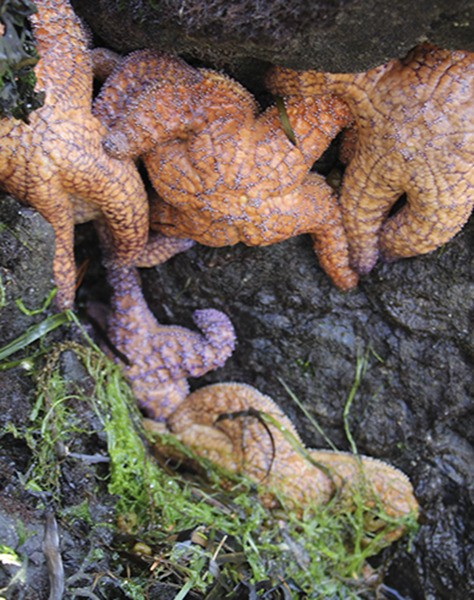The latest seastar survey by the Indian Island Marine Health Observatory on Aug. 10 found that incidence of Seastar Wasting Syndrome had declined by about half since mid-July to 19 percent.
“In other words, a little more than four-fifths of the ochre stars at Indian Island appear to be healthy, and this includes many smaller, younger seastars,” said Russel Barsh, Kwiaht director.
Total seastars visible in the inter-tidal zone have also decreased.
Millions of sea stars from Alaska to Mexico and is being studied by various teams, including about 40 biologists from many west coast universities and all the major aquariums.
“We have evidence that an infectious agent is involved, but it is too soon to say yet whether it is a virus or a bacterium,” said Drew Harvell, a marine epidemiologist at Cornell University who is studying sea stars on the island.
According to Barsh many seastars have retreated to deeper, cooler water, and those that remain around Indian Island are mostly hidden in crevices or under boulders, out of direct sunlight.
The next seastar census will be taken in November when there are low evening tides.
Interested members of the community may want to mark their calendars for Friday, Sept. 5, 3:30 pm to 5:30 pm at Orcas Island Library, for back-to-back research reports on Seastar Wasting at Indian Island by Barsh and the Crescent Beach Sand Dollar study (Amy Henry):
“An echinoderm double header,” said Barsh about the upcoming meeting.



